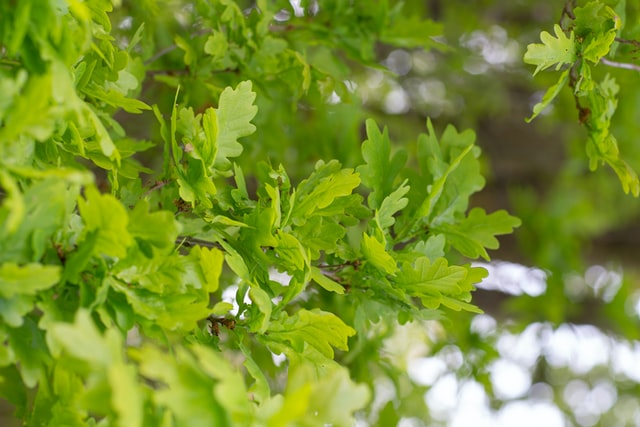
Gypsy (Spongy) Moths: How to Control An Outbreak & When to Worry
Share
Photos courtesy of Cornell Extension Service
The gypsy moth, now known as the spongy moth, can cause significant damage to trees and shrubs. They feed on the foliage of over 300 varieties of deciduous tree species, and will even eat conifer leaves during an outbreak.
Spongy moth infestations typically aren't significant enough to do lifetime damage to a healthy and established tree or shrub. Even a completely defoliated tree will typically come back the following year.
However, a compromised tree or shrub, like a newly planted one in your yard or one that has suffered damage in the past, can be especially susceptible to damage by spongy moths. Below are a few ways that you can protect your newly-planted trees and shrubs from a spongy moth infestation.

Preventative Measures
To deter the spongy caterpillars from making a home of your tree, mulch 2-3" around the base of the tree, but make sure that the mulch is 1-2" away from the trunk. Keep the base of the tree weed-free, and water frequently during drought conditions. Fertilize the tree in the spring to encourage strong growth and abundant foliage production.
Physical Deterrent & Removal
Spongy moth egg masses look like fuzzy brown patches on tree branches & trunks. These can be destroyed by squishing them then scraping the egg mass off into a bucket of warm soapy water. Leave overnight, then discard the water in the trash.
The caterpillars themselves can also be squished and discarded in the same manner as the egg masses.
We also recommend adding a physical barrier to your tree trunk. Tangle Foot tree wrap is an adhesive band that acts like fly tape--the caterpillars will stick to the tape and become immobile as they move up into the canopy. It is best to apply these barriers in April, when the caterpillars are hatching. They also will need to be replenished frequently as they lose their adhesiveness.

Insecticides
When using insecticides, spray during overcast and non-windy conditions. Always wear proper protection. Avoid using insecticides on blooming plants, as they could adversely affect beneficial pollinators. Insecticides also have the potential to harm predatory insect populations that are beneficial in controlling the spread of spongy caterpillars.
Only apply horticultural oil in March or April, before the caterpillars emerge, and in September or October, when you are no longer seeing the caterpillars. Apply on an overcast day. We have found that using horticultural oil in the summer causes foliage burn and can harm the tree. The oil will essentially smother the insects and their egg masses. While it is safe for humans and animals, it has the potential to harm other invertebrates.
These pesticides are made from naturally occurring bacteria and fungi. Bt is the most effective at targeting moth larvae, and it an organic insecticide. Bt should be used in early- to mid-May, when the caterpillars are young, as they become more resistant to it with age. Please follow the directions found on the packaging closely, as Bt also can harmother beneficial moth and butterfly larvae. Bt is safe for humans and pets.
Chemical Insecticides
These are synthetically-derived pesticides that should only be used as a last resort. They are typically broad-spectrum and will cause damage to beneficial insect populations. Fruit Tree Spray can be applied in early-to mid-May, when the caterpillars are still small and vulnerable.
Spongy moths are here to stay. They're something that we, as gardeners, will have to deal with as their population continues to thrive in Upstate New York. However, by taking a few preventative measures and by giving your trees and shrubs the best chance of survival we can beat (or at least live with) the spongy moths.


